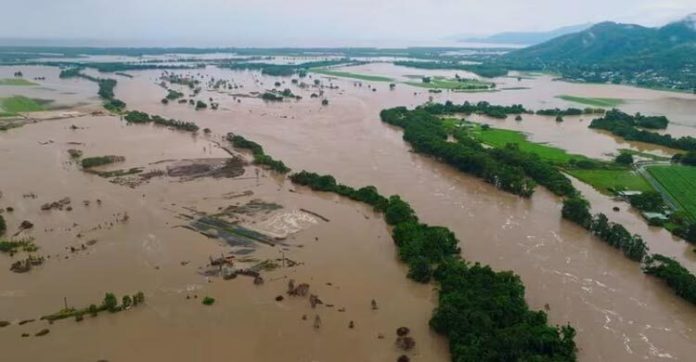Ten people died in Australia after severe thunderstorms hit the east of the country, authorities reported on Wednesday.
The states of Victoria, New South Wales and Queensland suffered large hail, heavy rain and thunderstorms on 25 and 26 December. High winds tore off roofs and toppled trees in the hardest-hit areas. More than 90,000 households remain without power.
Two people died as a result of tree falls.
Two women have been found dead near the town of Gympie, about 180 kilometres (112 miles) north of the state capital of Brisbane, after being washed away by a flooded storm drain, police reported.
Three people died after a yacht carrying 11 people on board capsized near Green Island in Moreton Bay during the storm, Queensland Police Commissioner Katarina Carrol said.
Authorities warned that fast-rising rivers and creeks could overflow their banks and flood tent camps, usually crowded during the Christmas and New Year weeks. A man was found dead at a tented camp in Victoria after flooding. He was presumably camping there with a woman who was found dead on Tuesday.
Queensland Premier Steven Miles claimed damage from Cyclone Jasper, which hit the state earlier this month, as well as recent thunderstorms could total “billions.”
The storms followed strong heat waves in the spring that led to several wildfires, and Cyclone Jasper caused widespread damage afterwards. Simon Bradshaw, research director at the independent non-profit Climate Council, stated that those were consequences of the global climate crisis.
When you start to piece together the experiences of this summer so far it is clear that we are living through an era of escalating climate consequences.
While Australia is battling rain in the east, several regions in the west, in contrast, are fighting fires. A volunteer firefighter has died while battling a forest fire, local media reported.
Australia’s December-February summer is influenced by the El Niño phenomenon, a climate model that depicts an extraordinary warming of surface waters in the eastern equatorial Pacific Ocean. It can cause extreme weather events ranging from wildfires to cyclones and long-term droughts.
